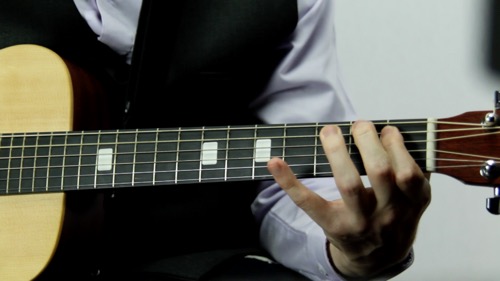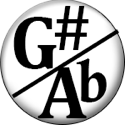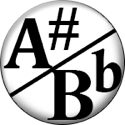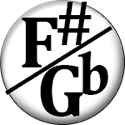Japanese Pentatonic Scales Hirajoshi

Hi, this is Hub Guitar.
The Japanese pentatonic scales are fairly different from the pentatonic scales used most often in modern music.
There is a much bigger emphasis on half-steps in these scales. And so that erie sound of constant half-steps is part of what defines the scale.
Another thing about learning scales used in World or Traditional music: the scale may not have been understood or used in the same way we normally use scales.
For instance, this scale was played by a ninja guy sitting up in a tree playing a thing called a shamisen.
There was definitely not another ninja guy jamming out playing a I IV V chord progression with one shamisen while the second ninja guy uses his shamisen to play pentatonic scales like we will have in musical setting today. That's just not how it works.
So be willing to try using the scales a little differently. For instance, you might play these scales using the root of the scale as a drone note. I'm going to give you one example of that, and I'm going to do that in A.
Or you might use these scales to improvise without accompaniment.
You can also find ways to apply them in the more conventional sense of using them to improvise melodies with related chords.
Here's pattern number 1.
And here's pattern number 2.
Here's pattern number 3.
Here's pattern number 4.
Here's pattern number 5.
So try these pattern yourself and see if you can find a way to apply them in your own playing.
The Japanese pentatonic scales (Hirajoshi, Kumoi, In, Itawo) are 5-note scales that emphasize the half-step interval. While the “pentatonic major” emphasizes the consonant intervals such as the perfect fifth, the Japanese pentatonic scales emphasize the darkness of the half-step.
This scale calls for an approach that is a little bit different than other scales you may have learned. It was normally played by a solo instrument. Any accompaniment would likely have been a tonicA word describing the tonal center of a piece of music, with other tones resolving to this note. drone note.
Japanese Pentatonic Scale 1
Also called the Sakura Scale for its use in the famous Japanese folk song.
Japanese Pentatonic Scale 2
Also called the Hirajoshi Scale.
Japanese Pentatonic Scale 3
Japanese Pentatonic Scale 4
Japanese Pentatonic Scale 5
Key Exercises
- Learn, memorize, and apply the scales.
- Create a chord progression that supports the harmonic major scale using chords built in thirds from each of the modes.
- Improvise using the harmonic major, at first without any accompaniment.
Special Thanks
Special thanks to Kyo Shimizu for helping us clarify some information about these scales.
 As the creator of Hub Guitar, Grey has compiled hundreds of guitar lessons, written several books, and filmed hundreds of video lessons. He teaches private lessons in his Boston studio, as well as via video chat through TakeLessons.
As the creator of Hub Guitar, Grey has compiled hundreds of guitar lessons, written several books, and filmed hundreds of video lessons. He teaches private lessons in his Boston studio, as well as via video chat through TakeLessons.











